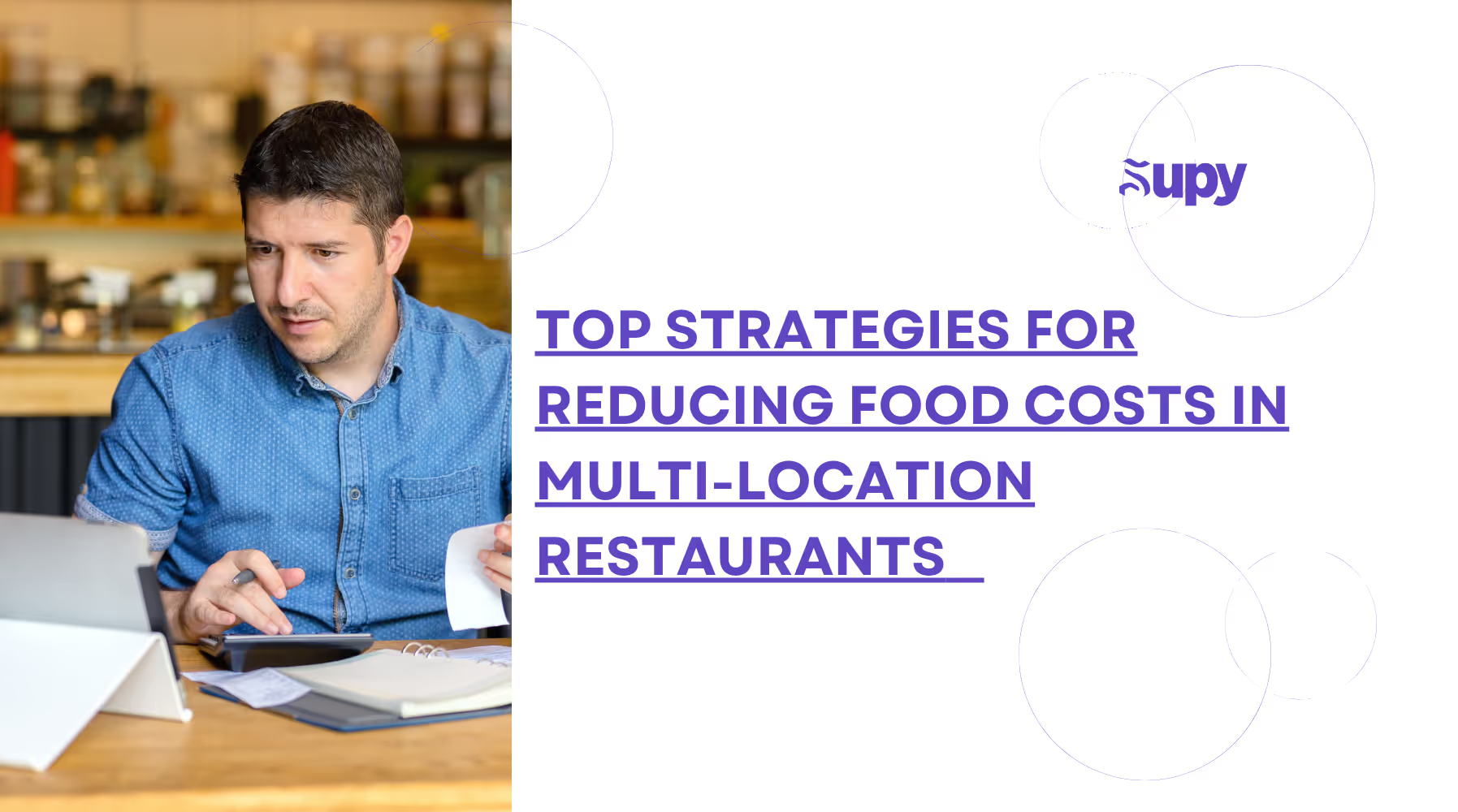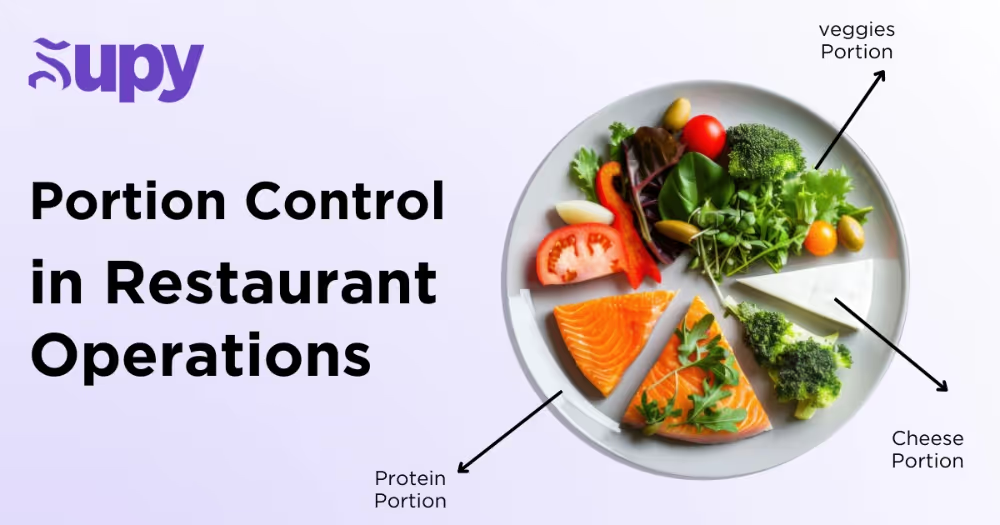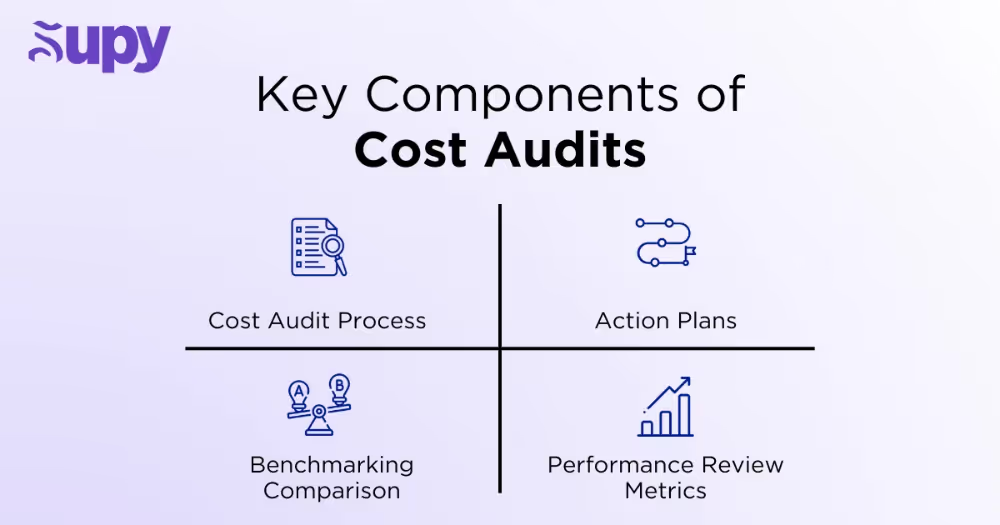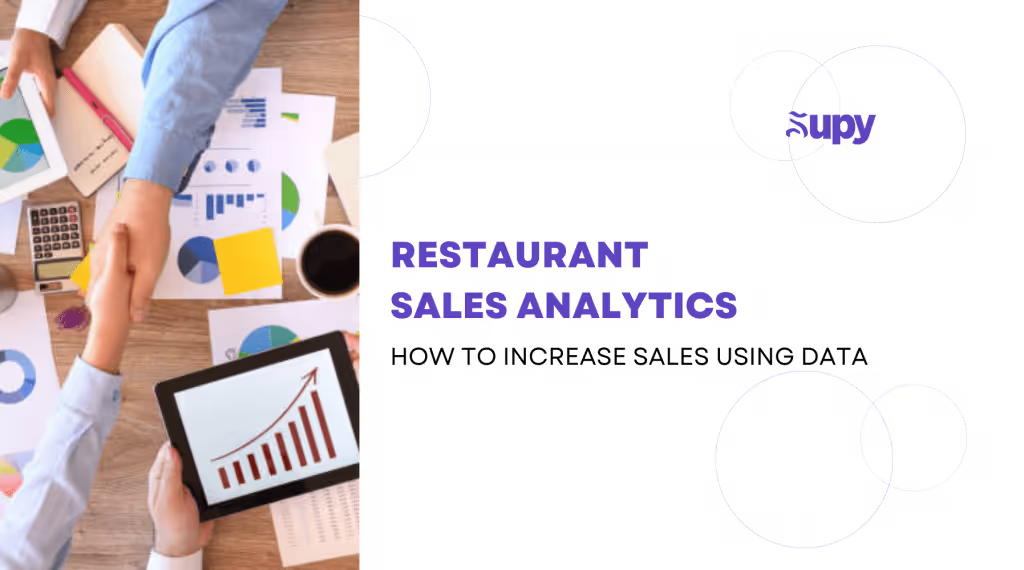Top Strategies for Reducing Food Costs in Multi-Location Restaurants

Managing food costs is a critical challenge for multi-location restaurants, where food expenses typically account for 25-35% of operating budgets. Inefficiencies in purchasing, preparation, or waste management can quickly erode profitability, especially when compounded by varying supplier relationships, local pricing, and distinct operational practices across different outlets.
To maintain profitability and streamline operations, multi-location restaurants need a comprehensive cost management strategy that addresses these complexities head-on. By analysing food cost data, optimising procurement, and leveraging technology, restaurants can pinpoint inefficiencies and implement effective cost-control measures.
In this article, we’ll cover:
- Optimizing Procurement with Centralized Purchasing
- Leveraging Technology for Streamlined Inventory Management
- Implementing Portion Control and Standardized Recipes
- Enhancing Supplier Relationships and Negotiating Better Contracts
- Streamlining Back-of-House Operations to Reduce Food Waste
- Implementing Regular Cost Audits and Performance Reviews
- Utilizing Customer Feedback to Optimize Food Costs
- Conclusion
- About Supy
These strategies will help you control your restaurant’s food costs effectively, ensuring your multi-location restaurant remains profitable and efficient.
1. Optimizing Procurement with Centralized Purchasing

Centralized purchasing is a powerful strategy for improving efficiency and controlling costs across multiple locations. By consolidating procurement activities into a unified system, restaurant operators can streamline processes, secure better deals, and maintain consistency in quality, ultimately leading to significant savings.
- Bulk Purchasing: Buy in bulk for multiple locations from a group purchasing organization to increase your bargaining power with suppliers. This strategy leads to lower food prices and more favorable terms. By consolidating purchases, you can significantly lower the actual food cost across all outlets, making it a cost-effective approach.
- Standardized Ordering: Ensuring all locations receive the same quality and quantity of ingredients helps maintain uniformity in food quality and reduces discrepancies in orders. This consistency is key to saving money by minimizing waste and ensuring that each location operates efficiently.
- Reduce Administrative Costs: Centralizing procurement minimizes the need for individual locations to manage their purchasing, saving both time and resources. This streamlined approach allows restaurant operators to focus more on core operations rather than administrative tasks.
- Automated Procurement Systems: Leveraging procurement technology to automate ordering based on real-time inventory levels and sales data ensures timely, accurate orders and minimizes the risk of stockouts or overstocking. This not only helps in controlling actual food costs but also keeps food prices stable, benefiting both the restaurant and its customers.
2. Leveraging Technology for Streamlined Inventory Management
Technology is essential for effective inventory management, particularly in multi-location restaurants. Modern restaurant inventory management software offers real-time tracking, forecasting, and automation, all of which help reduce waste and optimize food costs.
- Real-Time Tracking: Monitor stock levels across all locations to avoid over-ordering and prevent shortages, ensuring smooth operations and minimizing waste.
- Forecasting Tools: Use sales data and seasonal trends to predict future demand, allowing you to plan inventory more effectively and avoid overstocking or understocking.
- Automated Reordering: Implement systems that automatically trigger orders when inventory falls below preset thresholds, ensuring accurate and timely replenishment.
- Data Analytics: Analyze inventory data, usage, waste patterns, and cost trends to identify areas for improvement and make informed purchasing decisions.
By integrating technology like Supy into your inventory management process, you can streamline operations, reduce waste, and maintain optimal stock levels across all locations, ensuring greater efficiency and control over food costs.
3. Implementing Portion Control and Standardized Recipes

Portion control and standardized recipes are crucial for managing food costs and ensuring consistent quality food across multiple locations. These practices help many restaurants maintain food quality, control ingredient usage, and reduce waste.
- Consistent Portion Sizes: Use scales, measuring tools, and standardized serving utensils to ensure that each dish is served in the correct portion size, preventing over-serving and unnecessary waste. This practice can help save money by reducing excess food items and spending.
- Standardized Recipes: Develop detailed, standardized recipes that outline ingredient quantities and preparation methods. This ensures consistency in food quality and helps reduce food cost across all locations.
- Training and Monitoring: Train kitchen staff to adhere to portion control and recipe standards, and conduct regular audits to ensure compliance. Monitoring portion sizes and ingredient usage can help identify deviations and allow for prompt corrective action.
- Cost Analysis: Regularly review food costs associated with portion sizes and recipe adherence. If costs exceed expectations, adjustments to portion sizes or recipes may be necessary to further reduce food cost and maintain profitability.
4. Enhancing Supplier Relationships and Negotiating Better Contracts
Building strong relationships with suppliers and negotiating favourable contracts are crucial for managing food costs effectively in multi-location restaurants. Long-term partnerships can lead to better pricing, improved service, and a more reliable supply chain, while effective negotiation ensures you secure the best possible terms, contributing to cost savings and operational stability.
- Building Strong Supplier Relationships: Establishing and maintaining solid relationships with suppliers can significantly impact food costs. Open communication and a clear understanding of your needs foster collaboration and trust. Regular meetings and feedback sessions can lead to preferential pricing, priority service, and access to high-quality products.
- Negotiating Better Terms: Effective negotiation is key to securing favorable pricing and terms. Consider factors such as volume discounts, payment terms, and delivery schedules. Leveraging your buying power across multiple locations can result in better deals. Committing to larger orders or longer contracts may lead to reduced prices or additional benefits like free delivery or extended payment terms.
- Exploring Alternative Suppliers: While maintaining strong relationships with current suppliers is important, regularly exploring alternative options can ensure you’re getting the best value. Reviewing supplier performance and comparing prices with other vendors can help identify better terms or higher-quality products. If a supplier is not meeting expectations, consider alternatives that offer more competitive pricing or superior service.
- Monitoring Supplier Performance: Regular assessment of supplier performance is essential to ensure they continue to meet your needs and provide value. Monitor aspects like product quality, delivery reliability, and customer service. Address issues promptly to maintain service levels and avoid supply chain disruptions. Performance reviews can also highlight areas where renegotiation might improve terms.

5. Streamlining Back-of-House Operations to Reduce Food Waste
Streamlining back-of-house operations is crucial for reducing food waste and optimizing costs in multi-location restaurants. By implementing strategies that focus on waste reduction, efficiency, and sustainability, restaurants can enhance operational performance and minimize unnecessary expenses.
- Maximizing Use of Leftovers: Efficiently utilizing leftovers is a key tactic in reducing waste and cutting food costs. Repurpose surplus ingredients into new menu items or incorporate them into daily specials. Implement proper storage techniques, clear labeling, and a “first-in, first-out” (FIFO) inventory system to ensure that all ingredients, including expensive ingredients, are used before they spoil, reducing waste and maximizing resource use.
- Waste Tracking and Analysis: Implementing a robust waste tracking system allows restaurants to monitor and analyze the types and amounts of food waste generated. By regularly reviewing this data, restaurants can identify patterns such as overproduction or spoilage, and adjust purchase orders accordingly. This continuous analysis is vital for pinpointing inefficiencies and optimizing processes to cut food costs.
- Staff Training and Engagement: Engaging and educating staff on waste reduction techniques is essential for creating a culture of sustainability. Proper training programs should cover proper storage, efficient food preparation methods, and waste minimization strategies. Additionally, involve staff in initiatives like managing staff meals to prevent unnecessary waste and foster a sense of ownership. This approach helps in reducing food waste and enhancing overall efficiency.
6. Implementing Regular Cost Audits and Performance Reviews

Conducting regular cost audits and performance reviews is essential for maintaining effective food cost management in multi-location restaurants. These practices help identify inefficiencies, assess the effectiveness of current measures, and ensure alignment with financial goals.
- Conducting Cost Audits: Regular cost audits involve a thorough examination of food-related expenses, including ingredient costs, portion sizes, and waste levels. Establish a routine for audits at each location to identify discrepancies, assess inefficiencies, and ensure consistency in food cost control practices. Regular audits help maintain accurate food cost percentages and address issues before they impact the bottom line.
- Performing Performance Reviews: Performance reviews evaluate the effectiveness of your cost management strategies by assessing key performance indicators such as food cost percentages, waste levels, and procurement efficiency. Utilize past sales data to gauge how well current strategies are working and identify areas where adjustments may be needed. These reviews help refine practices to improve profit margins and address rising food costs.
- Benchmarking Against Industry Standards: Benchmarking compares your food cost management practices to industry standards. By evaluating your metrics against industry averages, you can identify gaps in your cost control strategies. This comparison helps you adjust your approach to stay competitive and efficient, ensuring that your food cost percentage remains in line with industry norms.
- Implementing Action Plans: Develop action plans based on audit and review findings. Outline specific steps to address identified issues, enhance efficiency, and achieve financial goals. Use insights from cost audits and performance reviews to improve ingredient cost management and refine strategies, ultimately boosting your profit margin and ensuring ongoing success.
7. Utilizing Customer Feedback to Optimize Food Costs
Incorporating customer feedback into your cost management strategy can significantly impact food cost control by aligning menu offerings with customer preferences and reducing waste. By actively listening to your customers and adapting your operations based on their input, you can enhance menu profitability and improve overall efficiency.
- Analyzing Customer Preferences: Use customer feedback to understand which menu items are popular and which are not. By focusing on high-demand items and considering removing underperforming dishes, you can reduce ingredient waste and streamline inventory management. This approach helps in optimizing food costs by aligning menu offerings with actual customer demand.
- Menu Engineering: Utilize customer feedback to guide menu engineering efforts. By analyzing feedback on taste, presentation, and overall dining experience, you can make informed decisions about menu changes. Focus on items that offer high profitability and align with customer preferences, improving your food cost management and enhancing the overall dining experience.
- Implementing Seasonal Changes: Customer feedback can reveal trends in seasonal preferences and dining habits. Adjusting your menu to include seasonal ingredients and specials based on customer preferences can help in optimizing procurement and reducing waste. Seasonal menus not only attract customers but also allow you to take advantage of cost-effective, high-quality ingredients.
8. Conclusion
A comprehensive management strategy is essential to effectively reduce food costs in multi-location restaurants. Key practices like centralizing procurement, utilizing advanced technology, and standardizing procedures are essential for reducing food costs without sacrificing quality. By focusing on procurement optimization, efficient inventory management, and strict portion control, restaurant owners can enhance consistency and operational efficiency across their outlets.
Moreover, building strong supplier relationships, conducting regular cost audits, and incorporating customer feedback into decision-making are crucial for ongoing improvements. These strategies will drive excellence in restaurant operations and secure long-term profitability, ensuring that restaurants remain competitive and successful in the dynamic industry landscape.
9. About Supy
Transform your inventory and food cost management with Supy, the premier solution tailored for restaurant owners. Our platform provides real-time insights, automated reordering, and advanced analytics to help streamline restaurant operations and cut food waste without sacrificing quality. Supy integrates effortlessly with your existing systems, offering actionable data to optimize purchasing decisions across all locations.
Discover how Supy can transform your business. Contact us today to schedule a demo and see how our solution can drive efficiency and reduce food costs for your multi-location restaurant.







